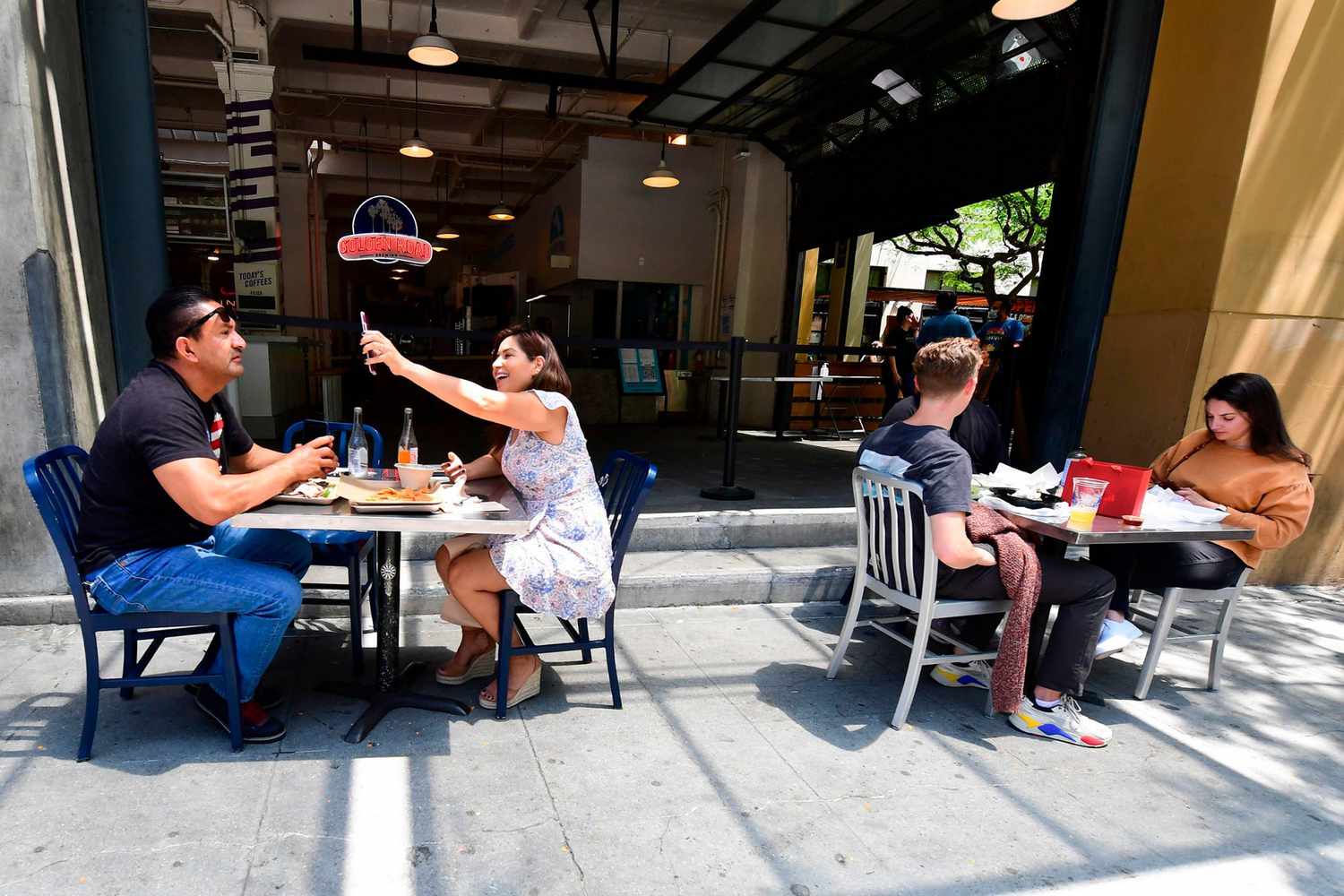
A recent survey of adults who tested positive for COVID-19 found that they were “twice as likely” to have recently dined at a restaurant than those who tested negative, the Centers for Disease Control said in a new study.
The study, published on Thursday, was based on a survey of 314 people who were tested for COVID-19 in July across 10 states: California, Colorado, Maryland, Massachusetts, Minnesota, North Carolina, Ohio, Tennessee, Utah and Washington. The participants all went to get tested because they were experiencing COVID-19 symptoms, but of that group, 154 tested positive while the other 160 tested negative.
The researchers asked each participant about their activities in the two weeks before they went to get tested, and both groups — those who tested positive and those who tested negative — reported going to church, the gym and stores. The main difference came in those who said they had recently dined at a restaurant, had drinks at a bar or gone to a coffee shop.
The group who tested positive "were approximately twice as likely to have reported dining at a restaurant than were those with negative SARS-CoV-2 [the virus that causes COVID-19] test results," the study authors said. Additionally, those who tested positive for COVID-19 but did not know where they had been exposed to the virus were more likely to have gone to a bar or coffee shop.
The results are an indication that places where masks cannot be worn at all times, such as a restaurant where people need to take their masks off to eat or drink, may be a higher risk for infection, the study authors said.
“Exposures and activities where mask use and social distancing are difficult to maintain, including going to places that offer on-site eating or drinking, might be important risk factors for acquiring COVID-19,” they said.
The study, though, had limitations. The researchers did not ask the people who ate at restaurants if they dined indoors or outdoors — where respiratory droplets are more likely to quickly dissipate.
"Reports of exposures in restaurants have been linked to air circulation,” they said. “Direction, ventilation, and intensity of airflow might affect virus transmission, even if social distancing measures and mask use are implemented according to current guidance.”

The study results do not mean that people should not dine out, but “they need to be thoughtful about how they're going to do it," Dr. Todd Rice, a co-author of the report and an associate professor of medicine at Vanderbilt University Medical Center, told NBC News.
Rice, who lives in Nashville, said that he asks to sit outside, and "even if I'm sitting at a table and the food hasn't arrived yet, I still wear a mask. [And] I won't sit at a table that's next to somebody else.”
According to the CDC's guidelines for restaurants and bars, drive-through, take out and delivery are the "lowest risk" for COVID-19 infections. Outdoor dining with limited capacity is a step above, at "more risk." Restaurants with both indoor and outdoor dining with tables six feet apart are "even more risk," while those without any distancing or reduced capacity are the "highest risk."
This study comes as many restaurants are struggling to survive. Each state and county has their own regulations for how many people can dine inside a restaurant, and many places are relying on take out and outdoor dining — if they have the space — to remain solvent with no plans for a government bailout in sight.
After months of delay, New York City is reopening indoor dining with 25 percent capacity beginning Sept. 30, New York Gov. Andrew Cuomo announced Wednesday. The city had initially planned to allow indoor dining in June, but reconsidered after states with indoor dining saw soaring numbers of new COVID-19 infections. Cuomo and NYC Mayor Bill de Blasio faced pressure from restaurateurs who are struggling without customers.

“Restaurants also pose a possible risk," Cuomo said, according to The New York Times. “But there is also a great economic loss when they don’t operate.”
Cuomo and de Blasio said that if the rate of positive COVID-19 cases goes above 2 percent, they may walk back the decision to allow indoor dining.
Source: Read Full Article
